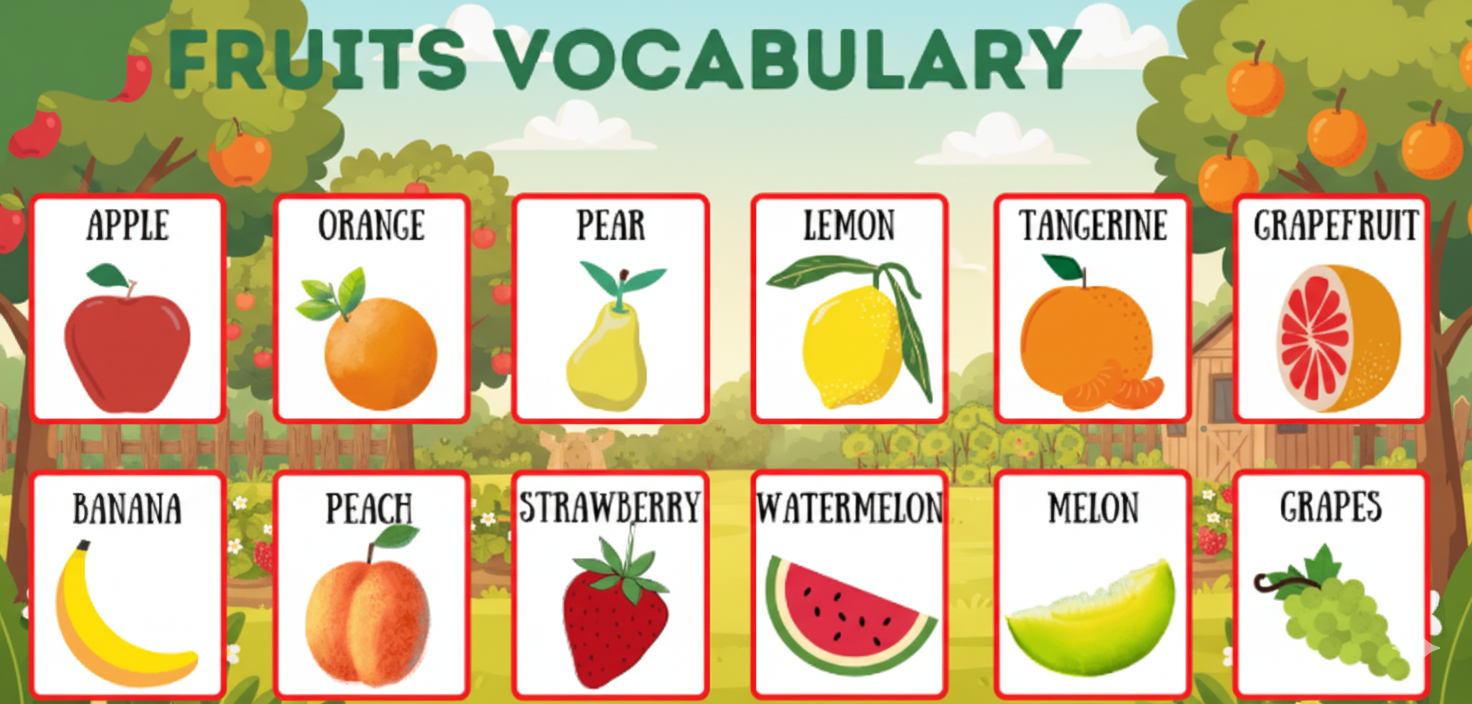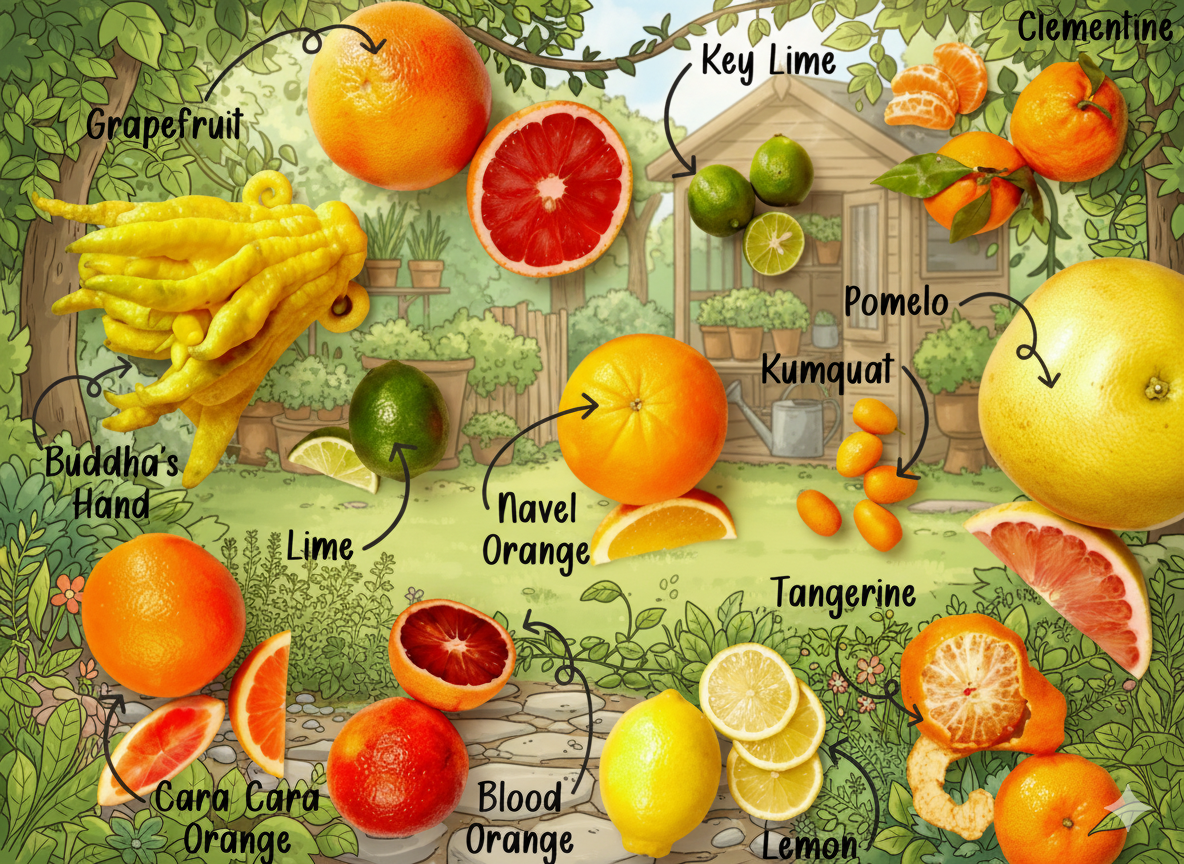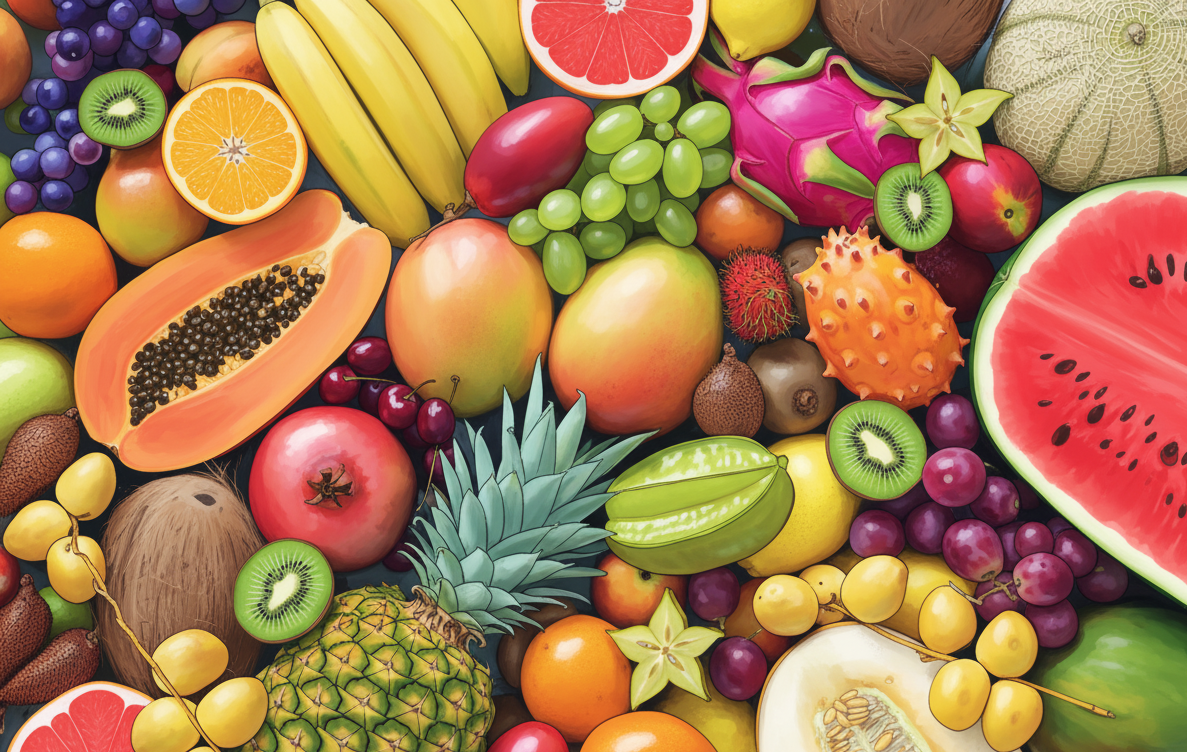Fruits Vocabulary: A Visual Learning Chart
Learning vocabulary related to fruits can be both fun and educational, especially when visual aids are involved. This blog post presents a comprehensive visual learning chart of fruits, diving deep into their names, benefits, and culinary uses. Whether you are an educator, a parent, or simply someone eager to expand your knowledge, this guide will offer valuable insights into the world of fruits.
Introduction to Fruits Vocabulary
Fruits are not only a vital part of our diet, but they also come with a wealth of vocabulary that can enhance our language skills. From apples to zucchinis, understanding the names and characteristics of various fruits can broaden our appreciation for their diversity. This post aims to introduce you to a rich array of fruit-related vocabulary, along with visual representations that make learning enjoyable.
The Importance of Learning Fruit Vocabulary
Learning fruit vocabulary is crucial for several reasons:
- Healthy Eating: Knowing different fruits helps in making healthier dietary choices.
- Language Skills: Expanding vocabulary aids in effective communication and literacy development.
- Culinary Knowledge: Understanding various fruits enhances cooking and baking skills.
A Visual Learning Chart of Fruits
Below is a detailed visual learning chart of fruits, categorized by their types and characteristics.
Citrus Fruits
Citrus fruits are known for their tangy flavor and high vitamin C content. Here are some common citrus fruits:
- Orange: A round, juicy fruit that is a staple in breakfast routines.
- Lemon: A yellow fruit known for its acidic taste, often used in drinks and desserts.
- Lime: Smaller than lemons, limes add a zesty flavor to dishes and beverages.
- Grapefruit: A larger fruit that can be sweet or sour, often eaten at breakfast.
For more in-depth information about citrus fruits, check out our article on Exploring the Wonderful World of Citrus Fruits: A Comprehensive Visual Guide.
Tropical Fruits
Tropical fruits thrive in warm climates and are often exotic in flavor and appearance. Some popular tropical fruits include:
- Mango: Known as the “king of fruits,” mangoes are sweet and juicy.
- Pineapple: A spiky fruit with a sweet, tangy flavor, great for grilling or in smoothies.
- Banana: A convenient snack that is rich in potassium.
- Papaya: A soft, sweet fruit that aids digestion.
Explore a delightful collection of tropical fruits in our article, Tropical Fruit Medley.
Stone Fruits
Stone fruits are characterized by a large pit or “stone” inside. Common stone fruits include:
- Peach: A sweet fruit with fuzzy skin, perfect for summertime desserts.
- Cherry: A small, round fruit that can be sweet or tart, often used in pies.
- Plum: Juicy and sweet, plums can be enjoyed fresh or dried as prunes.
- Apricot: A delicate fruit that is often used in jams and jellies.
Berries
Berries are small, juicy fruits that are rich in antioxidants. Here are some common types:
- Strawberry: A bright red berry that is popular in desserts and salads.
- Blueberry: A superfood known for its health benefits, often used in smoothies and baked goods.
- Raspberry: A delicate berry that can be sweet or tart, great for garnishing dishes.
- Blackberry: Similar to raspberries but larger and sweeter.
Discover why rainy weather makes fruits like blueberries and apples more nutritious in our article, Why Rainy Weather Makes Fruits Like Blueberries and Apples More Nutritious.
Melons
Melons are refreshing fruits often enjoyed in summer. They include:
- Watermelon: A hydrating fruit that is perfect for picnics.
- Cantaloupe: A sweet orange-fleshed melon that is delicious in salads.
- Honeydew: A green melon with a sweet, mild flavor.
Exotic Fruits
Exotic fruits may not be as common but offer unique flavors and health benefits. Some examples are:
- Dragon Fruit: Known for its vibrant pink skin and mild flavor.
- Durian: Famous for its strong odor, yet loved by many for its creamy texture.
- Rambutan: A hairy-skinned fruit that is sweet and juicy inside.
Benefits of Eating Fruits
Incorporating fruits into your diet comes with numerous health benefits:
- Rich in Nutrients: Fruits are packed with vitamins, minerals, and fiber.
- Weight Management: Low in calories, fruits can help you feel full and satisfied.
- Heart Health: Many fruits are known to lower blood pressure and cholesterol levels.
Fruits in Culinary Arts
Fruits play a significant role in culinary arts, where they are used in various forms:
- Fresh: Enjoyed raw as snacks or in salads.
- Juiced: Used in beverages for refreshment.
- Baked: Commonly used in desserts like pies and tarts.
- Preserved: Made into jams, jellies, and sauces.
For inspiration on how to incorporate fruits into your art and parties, check out our article, Revitalize Your Parties: The Art of Tropical Fruit Arrangements.
Fruit in Art and Culture
Fruits have been a source of inspiration in art and culture for centuries:
- Symbolism: Fruits often symbolize fertility, abundance, and health.
- Art Nouveau: Artists like Alphonse Mucha celebrated fruits in their work, showcasing their beauty.
- Still Life: Fruits have been a popular subject in still-life paintings, showcasing color and texture.
Explore the intersection of fruit and art in our article, Feast Your Eyes: A Celebration of Fruit in Art Nouveau Style.
Conclusion
Mastering fruits vocabulary can enrich your language skills, enhance your culinary experiences, and promote healthier eating habits. By utilizing visual aids and learning charts, you can make the learning process engaging and enjoyable. From citrus to tropical fruits, each category offers unique flavors and benefits that contribute to a healthy lifestyle. Remember, the world of fruits is vast and varied, so keep exploring!
We hope this visual learning chart has inspired you to dive deeper into the world of fruits. Happy learning!



